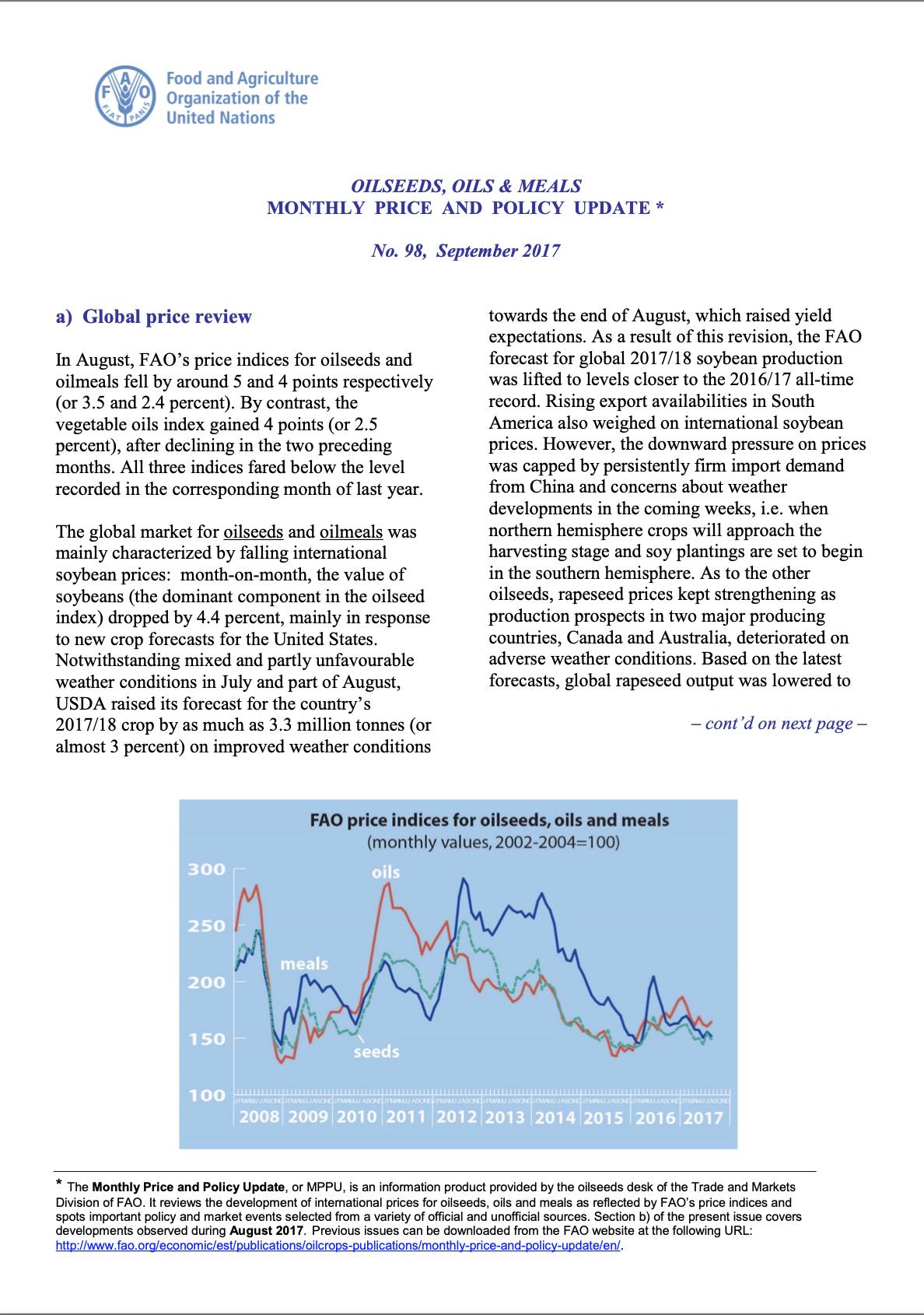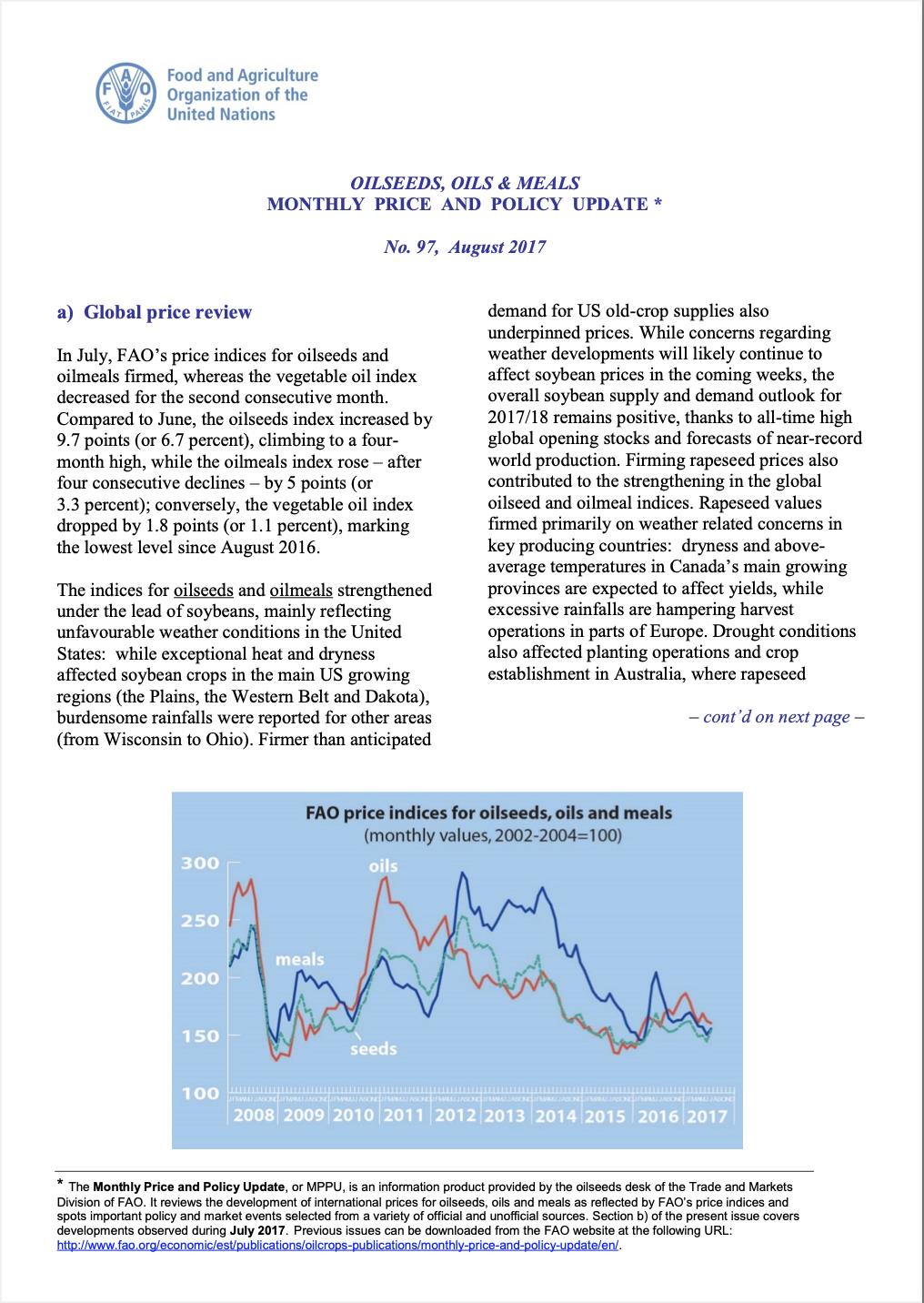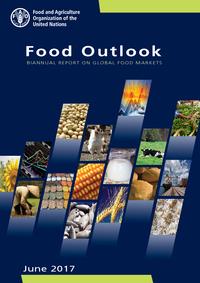
Food Outlook - June 2017
13/09/2017
Global food commodity markets are broadly stable, supported by adequate supplies. Prospects for continued stability remain favourable also for 2016/17. Despite larger volumes of imports, the world food import bill is set to decline by 9 percent to a 7-year low in 2016, on expectation of lower international prices and freights.
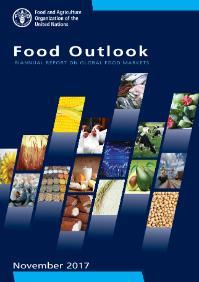
Food Outlook - November 2017
13/09/2017
Global food commodity markets are broadly stable, supported by adequate supplies. Prospects for continued stability remain favourable also for 2016/17. Despite larger volumes of imports, the world food import bill is set to decline by 9 percent to a 7-year low in 2016, on expectation of lower international prices and freights.
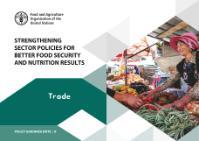
Strengthening sector policies for better food security and nutrition results: Trade
13/09/2017
Trade in agricultural products has expanded almost threefold in value terms over the past decade and is expected to continue to increase over the coming years. As such, it will play an increasingly important role in influencing the extent and nature of food security. While agricultural trade can have important benefits for food security and nutrition, the challenge is to ensure that its expansion works for, and not against, the elimination of hunger, food insecurity and malnutrition. Policy mak ers formulating trade policies must prioritize long-term structural transformation objectives over short-term political or commercial interests. This guidance note aims to support policy makers and agriculture stakeholders in promoting greater coherence between trade and agricultural policies and identifying the policy space within trade agreements for developing countries to address food security concerns. It also discusses the appropriateness of different trade policy measures in improving foo d security.
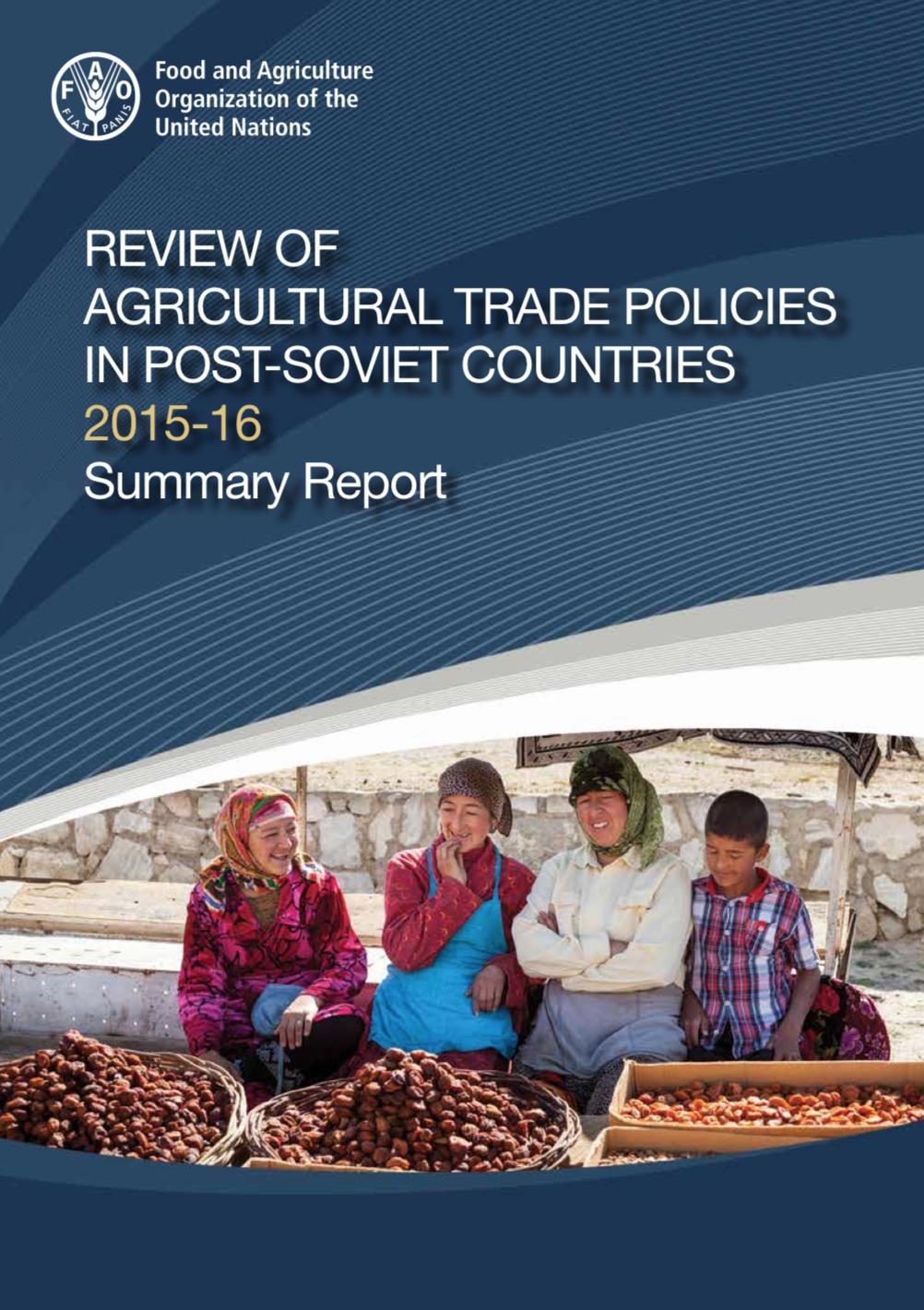
Review of agricultural trade policies in post-Soviet countries 2015-16
13/09/2017
The document is based on the publication “Review of Agricultural Trade Policies in former Soviet Union countries 2015-16” available in Russian. The main economic and political factors influencing the patterns of agrifood trade in the region during 2014 generally continued to have an impact in 2015 and 2016. In particular, a further slowdown in economic growth was observed in all countries during 2015. In addition, the depreciation of all the national currencies against the US dollar and the euro, which began in 2014, continued in 2015 and, in some cases, in 2016. Due to weaker national currencies and falling consumer demand, the total value of imports of agrifood products in dollar terms decreased in many countries. The decline in demand for agrifood products in the region and lower international prices also contributed to the reduction in the value of agrifood exports from the region. At the same time, the last two years have been marked by stronger integration processes affecting agrifood trade among several countries in the region.
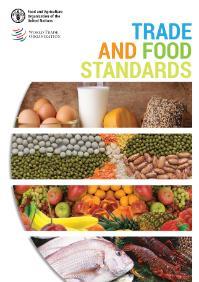
Trade and Food Standards
13/09/2017
This publication explains how international food safety standards are set through the Joint Food and Agriculture Organization of the United Nations and World Health Organization (FAO/WHO) Food Standards Programme – the Codex Alimentarius Commission – and how these standards are applied in the context of the World Trade Organization (WTO) Agreements on the Application of Sanitary and Phytosanitary Measures (SPS Agreement) and on Technical Barriers to Trade (TBT Agreement).Through the FAO/WHO C odex Alimentarius, members establish science-based, internationally agreed food standards. The publication describes the two organizations, how they operate together, and how countries can and should engage to keep international food standards up to date and relevant, and to resolve trade issues. The publication also highlights the need to invest in domestic capacities to be prepared now and in the future to keep food safe and to ensure that trade flows smoothly. The publication also illustrates some of the drivers of change in the area of food regulation, underlining the need for governments to be constantly attentive and ready to pick up on challenges and new opportunities, be they related to human health, consumer preferences or evolutions in technology. Members will need strong institutions and national capacity to respond to these challenges, both domestically and in the dynamic international system of food standards and trade rules that they have created. They will need to be flexible and forward looking, to enjoy the benefits and manage the risks the future holds, mindful that food is a commodity like no other.
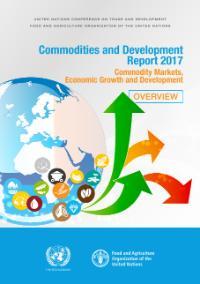
Commodities and Development Report 2017: Commodity Markets, Economic Growth and Development (OVERVIEW)
13/09/2017
Short overview of the "Commodities and Development Report 2017: Commodity Markets, Economic Growth and Development" that analyses the effects of commodity dependence on human development.
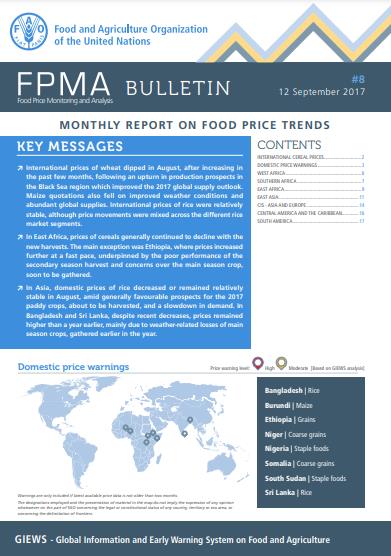
Food Price Monitoring and Analysis (FPMA) Bulletin #8, 12 September 2017
12/09/2017
International prices of wheat dipped in August, after increasing in the past few months, following an upturn in production prospects in the Black Sea region which improved the 2017 global supply outlook. Maize quotations also fell on improved weather conditions and abundant global supplies. International prices of rice were relatively stable, although price movements were mixed across the different rice market segments. In East Africa, prices of cereals generally continued to decline with the new harvests. The main exception was Ethiopia, where prices increased further at a fast pace, underpinned by the poor performance of the secondary season harvest and concerns over the main season crop, soon to be gathered. In Asia, domestic prices of rice decreased or remained relatively stable in August, amid generally favourable prospects for the 2017 paddy crops, about to be harvested, and a slowdown in demand. In Bangladesh and Sri Lanka, despite recent decreases, prices remained higher than a year earlier, mainly due to weather-related losses of main season crops, gathered earlier in the year.
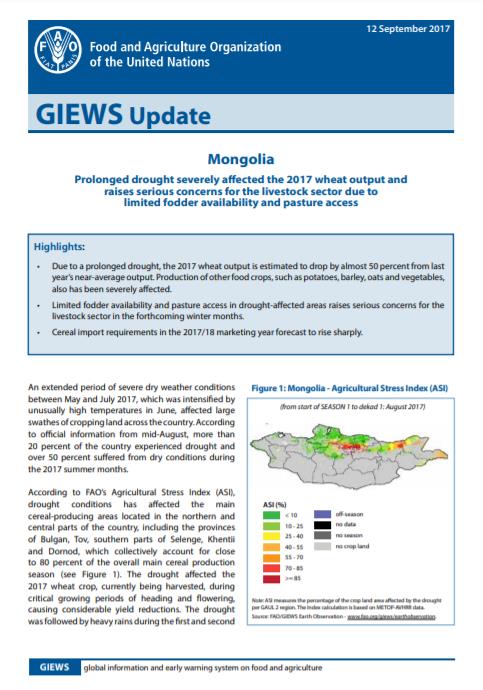
GIEWS Update - Mongolia, 12 September 2017
12/09/2017
Due to a prolonged drought, the 2017 wheat output is estimated to drop by almost 50 percent from last year’s near-average output. Production of other food crops, such as potatoes, barley, oats and vegetables, also has been severely affected. Limited fodder availability and pasture access in drought-affected areas raises serious concerns for the livestock sector in the forthcoming winter months. Cereal import requirements in the 2017/18 marketing year forecast to rise sharply.
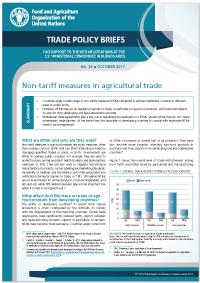
No. 26 Non-tariff measures in agriculture trade
05/09/2017
This brief analyses the impact that non-tariff measures (NTMs) have on agri-food products and the disciplines on NTMs in the multilateral trading system.
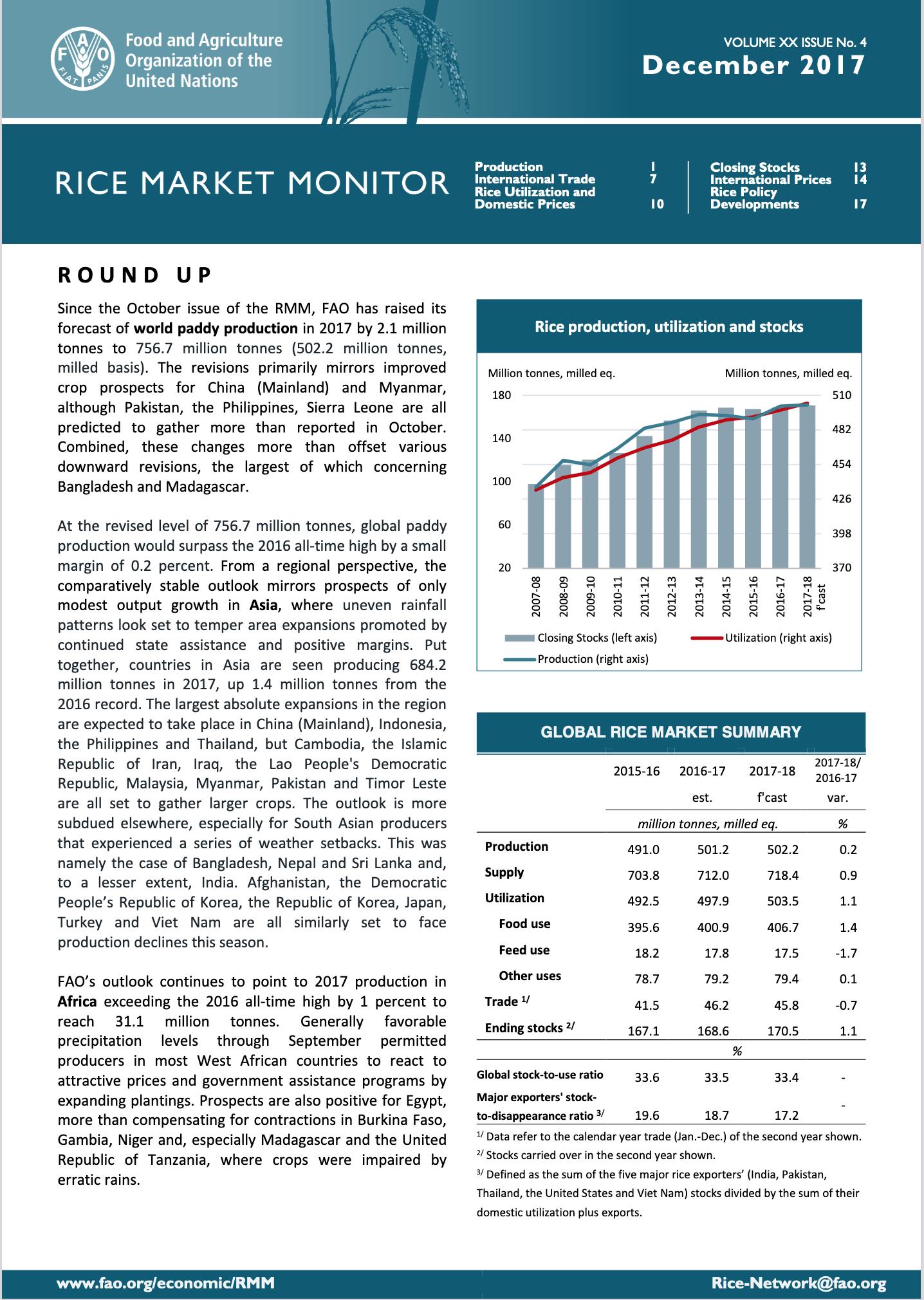
FAO Rice Market Monitor - December 2018
12/08/2017
The FAO Rice Market Monitor (RMM) provides an analysis of the most recent developments in the global rice market, including a short-term outlook. The RMM is a quarterly publication generally released in April, July, October and December. Presently, the full document is available only in English, but its Round-up is also available in Spanish and French.The December 2017 issue of the FAO Rice Market Monitor (RMM) provides analysis and forecasts of world rice production, utilization, and global rice inventories in 2017/18 season. It also covers the outlook of world trade in rice in calendar year 2017 and 2018, as well as a review of international rice prices during the past quarter.
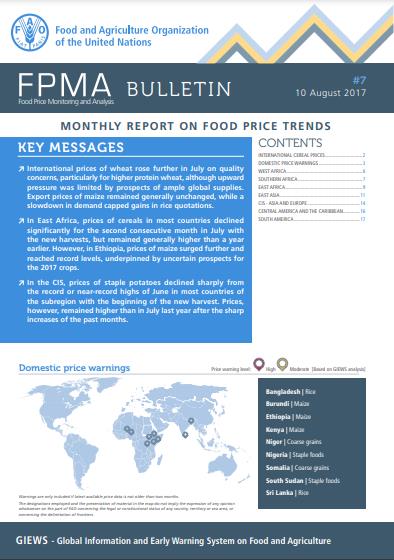
Food Price Monitoring and Analysis (FPMA) Bulletin #7, 10 August 2017
10/08/2017
International prices of wheat rose further in July on quality concerns, particularly for higher protein wheat, although upward pressure was limited by prospects of ample global supplies. Export prices of maize remained generally unchanged, while a slowdown in demand capped gains in rice quotations. In East Africa, prices of cereals in most countries declined significantly for the second consecutive month in July with the new harvests, but remained generally higher than a year earlier. However, in Ethiopia, prices of maize surged further and reached record levels, underpinned by uncertain prospects for the 2017 crops. In the CIS, prices of staple potatoes declined sharply from the record or near-record highs of June in most countries of the subregion with the beginning of the new harvest. Prices, however, remained higher than in July last year after the sharp increases of the past months.

No. 25 Evolution of import tariffs and the issue of tariff escalation
08/08/2017
This brief provides an overview of the evolution in bound and applied tariffs with a focus on tariff escalation.
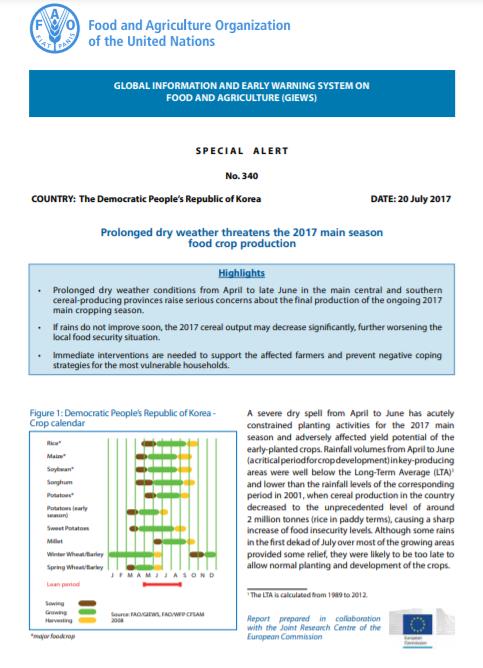
GIEWS Special Alert No. 340 - The Democratic People’s Republic of Korea, 20 July 2017
20/07/2017
Prolonged dry weather from April to late June in central and southern main cereal producing provinces raises serious concerns for the ongoing 2017 main cropping season. If rains do not improve in coming few weeks the 2017 cereal output may decrease significantly, deteriorating the already dire food insecurity. Immediate interventions are needed to safeguard the 2017 main season cereals.
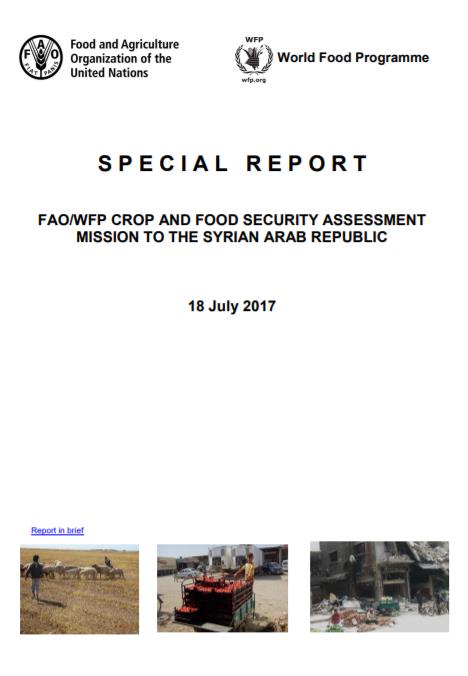
Special Report - FAO/WFP Crop and Food Security Assessment Mission to the Syrian Arab Republic - 18 July 2017
18/07/2017
Crop production: Production of wheat and barley slightly improved in 2017 compared to previous year due better rainfall and improved access to agricultural land in some areas. Livestock: Over the past two years, the herd sizes have stabilized albeit at a very low level. Displacement: About two in five people are on the move inside the country.
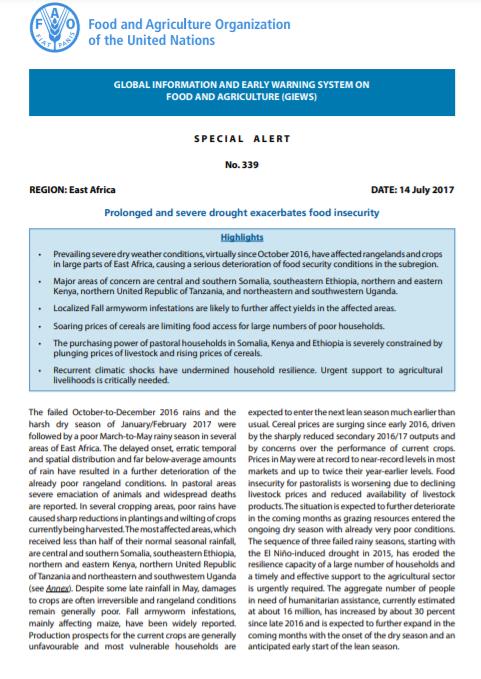
GIEWS Special Alert No. 339 - East Africa, 14 July 2017
14/07/2017
Prevailing severe dry weather conditions, virtually since October 2016, have affected rangelands and crops in large parts of East Africa, causing a serious deterioration of food security conditions in the subregion. Major areas of concern are central and southern Somalia, southeastern Ethiopia, northern and eastern Kenya, northern United Republic of Tanzania, and northeastern and southwestern Uganda. Localized Fall armyworm infestations are likely to further affect yields in the affected areas. Soaring prices of cereals are limiting food access for large numbers of poor households. The purchasing power of pastoral households in Somalia, Kenya and Ethiopia is severely constrained by plunging prices of livestock and rising prices of cereals. Recurrent climatic shocks have undermined household resilience. Urgent support to agricultural livelihoods is critically needed.

No. 24 Trade and Food Standards
11/07/2017
Trade and food standards. This brief emphasizes the importance of applying international food safety standards, and how these standards are applied in the context of WTO agreements based on the jointly prepared publication by FAO and WTO.
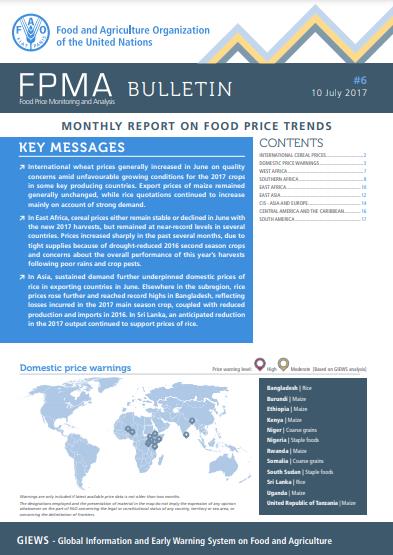
Food Price Monitoring and Analysis (FPMA) Bulletin #6, 10 July 2017
10/07/2017
International wheat prices generally increased in June on quality concerns amid unfavourable growing conditions for the 2017 crops in some key producing countries. Export prices of maize remained generally unchanged, while rice quotations continued to increase mainly on account of strong demand. In East Africa, cereal prices either remain stable or declined in June with the new 2017 harvests, but remained at near-record levels in several countries. Prices increased sharply in the past several months, due to tight supplies because of drought-reduced 2016 second season crops and concerns about the overall performance of this year’s harvests following poor rains and crop pests. In Asia, sustained demand further underpinned domestic prices of rice in exporting countries in June. Elsewhere in the subregion, rice prices rose further and reached record highs in Bangladesh, reflecting losses incurred in the 2017 main season crop, coupled with reduced production and imports in 2016. In Sri Lanka, an anticipated reduction in the 2017 output continued to support prices of rice.

